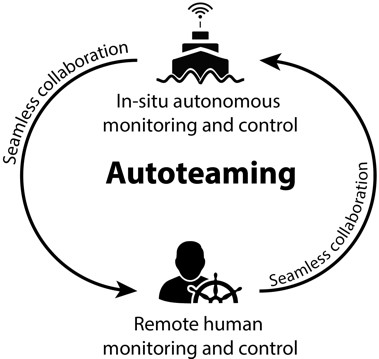AutoTeaming
The Autoteaming project: Seamless human-machine teaming for safe and scalable operation of autonomous passenger ferries

The Autoteaming project will develop new technologies for seamless human-machine teaming to accelerate the digital transformation of Norwayʼs maritime industry.
Recent technology advancements in machine autonomy have demonstrated the potential to significantly enhance maritime operations by improving efficiency, safety, and sustainability. This technology potential is underscored by increasing mobility and environmental demands paired with a lack of qualified navigators.
Contemporary design has been guided by the conviction that technology should replace tasks normally done by humans. The problem with this approach is that when the unexpected happens or when the automation inevitably fails, a human navigator must be in the loop to take swift and decisive preventive actions. Therefore, to succeed at leveraging the advantages of advanced automation, the technologies must be designed to support navigators, not replace them.
Our vision is that humans and machines can form effective teams, and we intend to demonstrate this with small-scale autonomous ferries supervised from a fully integrated remote control centre.
The outcomes of the project will be novel automation transparency and decision-support technologies for seamless human-machine teaming.
The Autoteaming project will culminate in a demonstration of the worldʼs first remotely supervised autonomous passenger ferries without navigators onboard.

Researchers
-
Ole Andreas Alsos Head of Shore Control Lab / Professor in Interaction Design
+47-73591463 +4791544825 oleanda@ntnu.no Department of Design -
Edmund Førland Brekke Professor
+47-73594382 edmund.brekke@ntnu.no Department of Engineering Cybernetics -
Egil Sverre Eide Associate Professor
+47-73594310 +4741691512 egil.eide@ntnu.no Department of Electronic Systems -
Anastasios Lekkas Associate Professor
+4794101359 anastasios.lekkas@ntnu.no Department of Engineering Cybernetics -
Erik Veitch Researcher
erik.a.veitch@ntnu.no Department of Design
